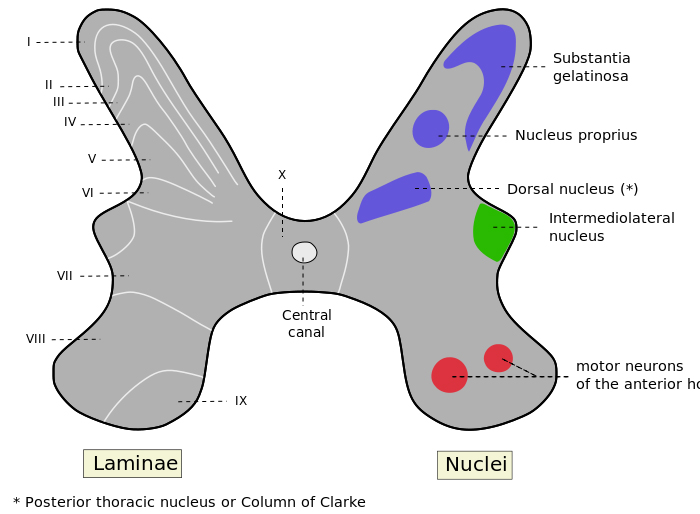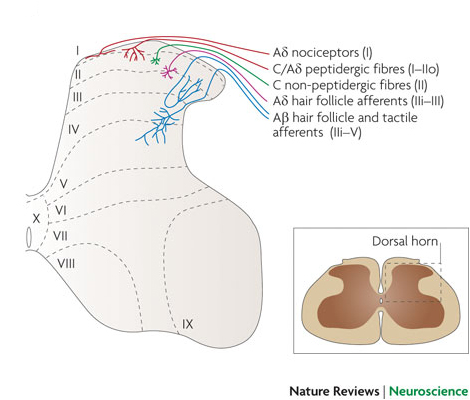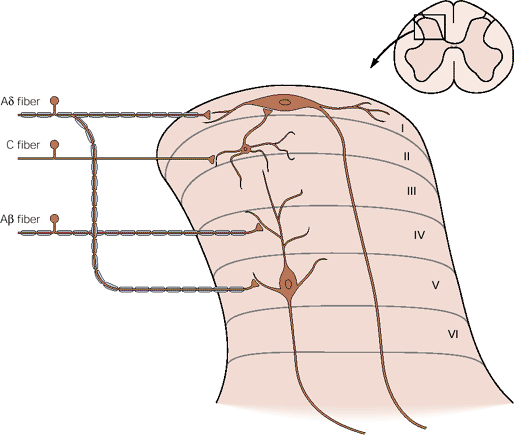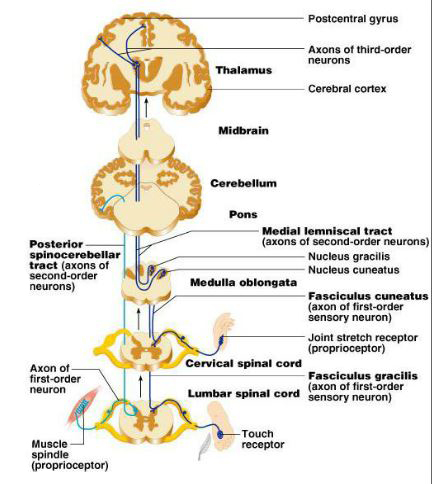A neuroanatomist called Rexed looked at the structure of the grey matter of the spinal cord and divided it into columns of cells that were similar to each other in different segments. His observations were based on the shape and size of the neurones, and he divided the grey matter into 10 (Roman X) layers and 6 of these are in the dorsal horn, numbered I to VI . The classification has been useful in that the different lamina have neurones with different functions. Neurones involved in Sensation Lamina I was the marginal layer or zone. Lamina II had a gelatinous appearance and is sometimes called the substantia gelatinosa. Lamina IV and V had larger cells and this area has also been called the Nucleus Proprius In Lamina VI another anatomist gave his name to Clarke's column, sometimes called the nucleus dorsalis. Lamina X is the area around the central canal |
In the ventral horn, lamina VIII and IX contain longitudinal columns of motoneurones.
|
The dorsal horn is concerned with sensory functions, and different types of dorsal root axons originating from the skin and elsewhere synapse in different laminae of the dorsal horn. Some general principles apply: the superficial laminae are concerned with nociceptive sensations, and the deeper laminae also process information from low threshold afferents. However some neurones in the deeper laminae have inputs from nociceptive and tactile receptors : these are called Wide Dynamic Range Neurones (WDR neurones). Superficial Laminae Laminae I and II are concerned with processing information from the nociceptive afferents which sense injury and inflammation in their receptive fields and are concerned with pain sensation. The neurones of lamina I, sometimes called marginal cells have long axons that project to the brainstem and thalamus. Lamina II neurones (the substantia gelatinosa) is concerned with modulating the activity of Lamina I cells. Lamina II cells do not project outside the dorsal horn.
The diagram opposite shows that the neurones of Laminae I and IV/V have axons that project rostrally after crossing the midline of the cords near the central canal.
|
|





